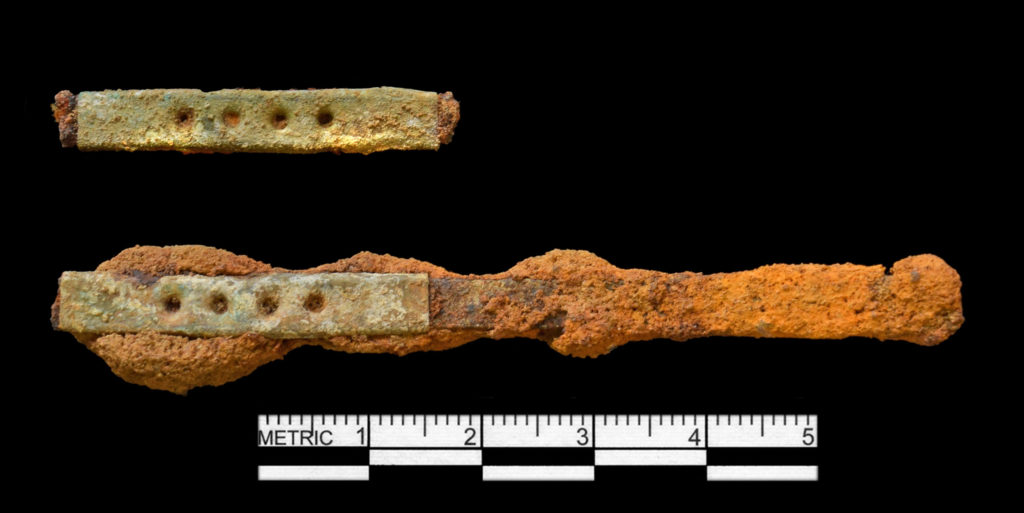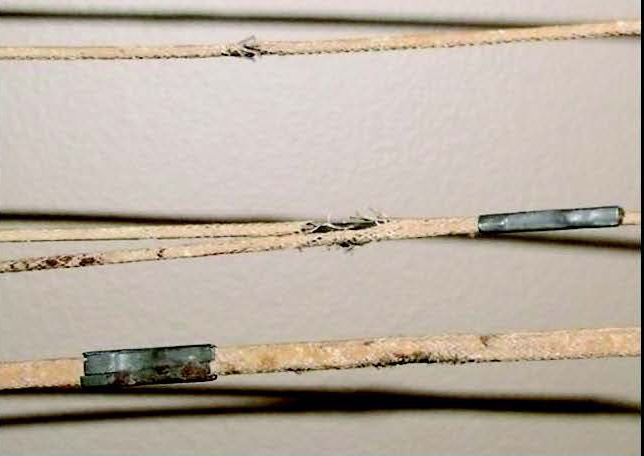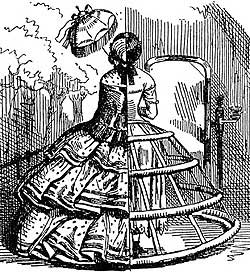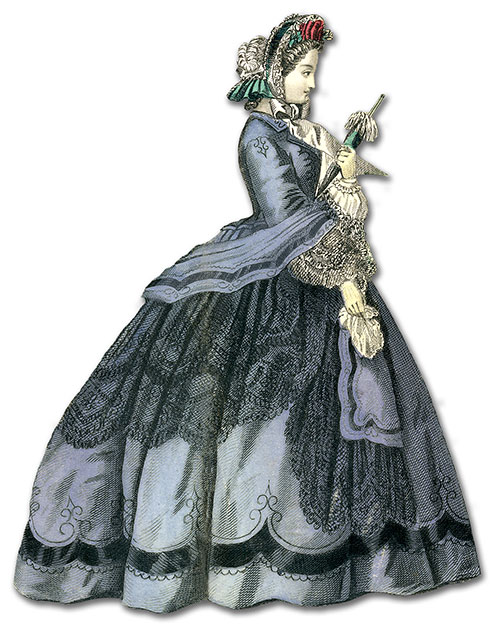Featured Fragment – Cage Crinoline Fragments
By Kerry S. González
In January 2017, Dovetail conducted excavations at the site of a proposed Riverfront Park in Fredericksburg, Virginia. This was the third time Dovetail visited the area along Sophia Street in downtown Fredericksburg—reflecting its abundant prehistoric and historic activity. Over 10,000 artifacts were recovered from the three separate excavations, but for this month’s blog we are highlighting the cage crinoline fragments that were recovered from a feature identified as a Civil War trench (for more on the trench see our blog from January 2017).
The cage crinoline fragments recovered during the excavations were made of an iron alloy with some fragments sheathed in a copper alloy (see below). The cage crinoline became popular in the mid-nineteenth century, and by 1856, W.S. Thomson received a patent for the metal-caged crinoline (Thomas 2014).
The purpose of the cage crinoline was to create a structure for the fabric of a woman’s skirt that was laid over top of the structural system. This cage was constructed of wire hoops and woven tapes, and the metal wire hoops were used to create the cage “that supported the ever-widening hems without the extra weight of layered petticoats” (Rivers Cofield 2015). The hoops were held in place by white metal alloy tubes that cinched around the wire hoops. However, the space created under the skirt by the cage made pantaloons, essentially baggy pants, vital for the virtue of the wearer to remain intact as well as to help keep the legs warm.
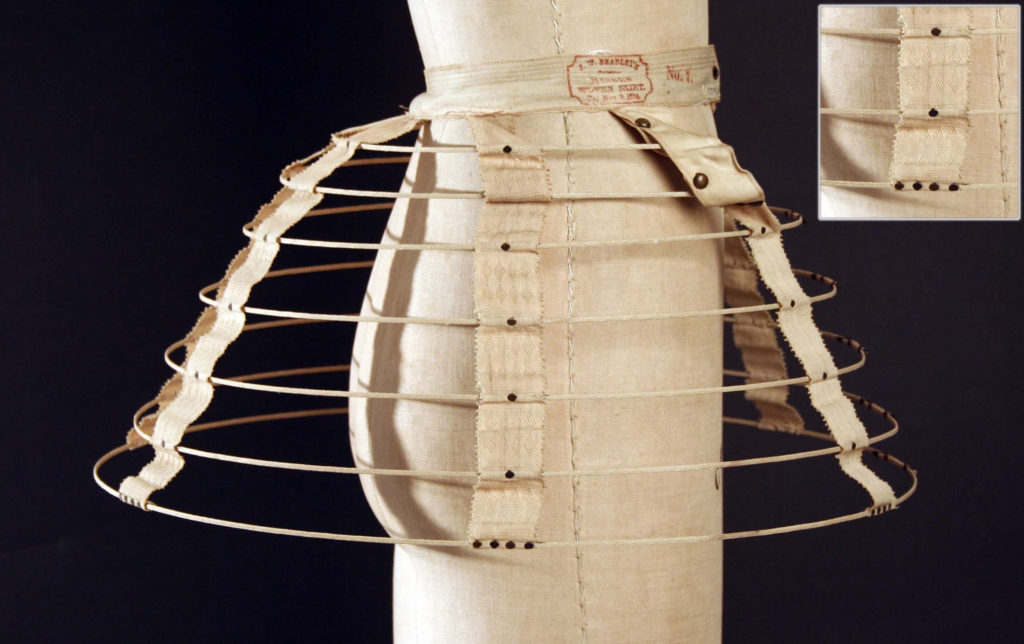
Image of Circa 1858 Cage Crinoline (The Metropolitan Museum of Art 2017: Accession number C.I.45.79.10).
The small fragments recovered from the Riverfront Park site displayed a typical composition, with the ferrous metal hoop fragments and copper alloy tubes very apparent. This type of artifact is a great example of a ‘small find’ that could be easily misidentified, especially considering the fragmentary nature of the object. It is our hope that this blog can shed some light on this type of artifact and help lead to more accurate archaeological identifications.
Any distributions of blog content, including text or images, should reference this blog in full citation. Data contained herein is the property of Dovetail Cultural Resource Group and its affiliates.
References:
Victoriana Magazine
2016 The Crinoline or Hoop Skirt. Online documentation. https://www.victoriana.com/Victorian-Fashion/crinoline.htm, accessed December 2017.
The Metropolitan Museum of Art
2017 Cage Crinoline, Accession Number C.I.45.79.10. Electronic document, https://www.metmuseum.org/art/collection/search/104430, accessed March 2017.
Rivers Cofield, Sara
2015 Houston-LeCompt Personal Adornment. Appendix I of the Archaeological Data Recovery at the Houston-LeCompt Site (7NC-F-139;N-14517), New Castle County, Delaware. Dovetail Cultural Resource Group, Fredericksburg, Virginia.
Thomas, Pauline W.
2014 Crinoline Fashion History. Electronic document, https://www.fashion-era.com/crinolines.htm, accessed March 2017.

